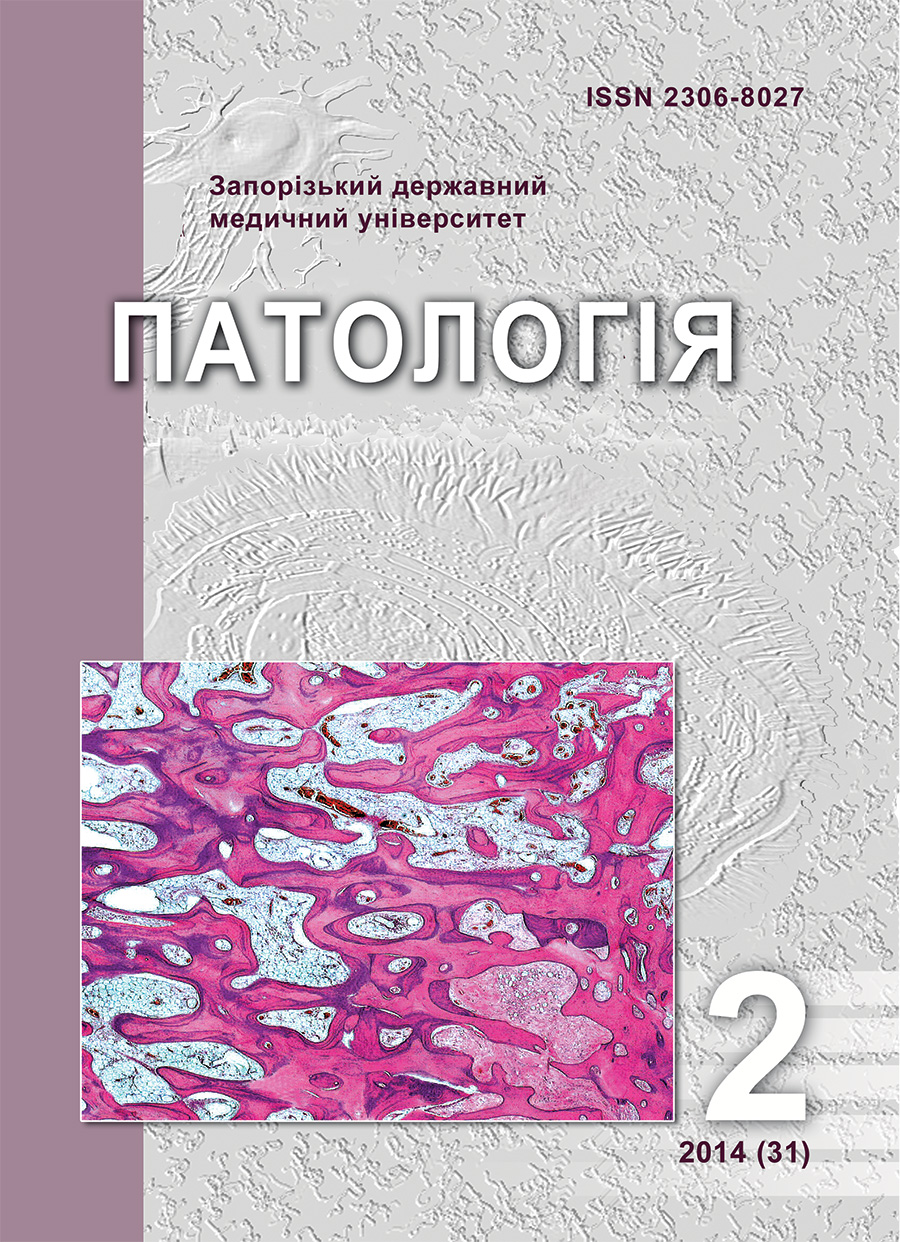Interrelation between fibrosis, angiogenesis and ductular reaction in progression of chronic steatohepatitis (alcoholic and non-alcoholic) and hepatitis C virus infection
DOI:
https://doi.org/10.14739/2310-1237.2014.2.28589Keywords:
chronic steatohepatitis, hepatitis C viral infection, fibrogenesis, angiogenesis, ductular reactionAbstract
Most specific morphologic signs of chronic hepatitis were studied at early stages of the diseases.
Aim. To elucidate the interrelation between fibrosis, angiogenesis and ductular reaction in chronic steatohepatitis and hepatitis C viral infection at the stage of cirrhotic transformation.
Methods and results. 45 patients with alcoholic steatohepatitis (ASH), nonalcoholic steatohepatitis (NASH) and hepatitis C viral infection (HCV) at the stage of cirrhotic transformation were enrolled in this study and underwent clinicopathologic examination. The measures of fibrogenesis, angiogenesis and regeneration employed were α-SMA, CD34 and CK19 immunopositive cells respectively. The correlations of these factors with ASH, NASH and HCV were elucidated. Significant ductular reaction was observed only in HCV, whereas low CK19 index could be observed in ASH and NASH. CK19 index in HCV positively correlated with septal fibrosis and angiogenesis. The hepatic neovascularization is proportional to the degree of liver fibrosis in all three diseases.
Conclusion. The results indicate that ductular reaction plays an important role in HCV progression at the stage of cirrhotic transformation whereas fibrosis and angiogenesis prevail in ASH and NASH at the stage of cirrhotic transformation.
References
Schuppan, D., & Afdhal, N. H. (2008). Liver cirrhosis. Lancet, 371(8), 838–851.
Tomanovic, N. R., Borivic, I. V., & Brasanac, D. C. (2009). Activated liver stellate cells in chronic viral C hepatitis: histopathological and immunohistochemical study. J Gastrointestin Liver Dis., 18(2), 163–167.
Coulon, S., Heindryckx, F., & Geerts, A. (2011). Angiogenesis in chronic liver disease and its complications. Liver Int., 31(2), 146–162.
Zhang, L., Theise, N., Chua, M., & Reid, L.M. (2008). The stem cell niche of human livers: symmetry between development and regeneration. Hepatology, 48(5), 1598–1607.
Paternostro, C., David, E., Novo, E., & Parola, M. (2010). Hypoxia, angiogenesis and liver fibrogenesis in the progression of chronic liver diseases. World J Gastroenterol., 16(21), 281–288.
Glaser, S. S., Gaudio, E., & Miller, T. (2009). Cholangiocyte proliferation and liver fibrosis. Expert Rev.Mol. Med., 30, 421–435.
Рriester, S., Wise, C., & Glaser, S. S. (2010). Involvement of cholangiocyte proliferation in biliary fibrosis. World J. Gastroenterol. Pathophysiol., 1(2), 30–37.
Bedossa, P., & Poynard, T. (1996). An algorithm for grading activity in chronic hepatitis C. The French METAVIR Cooperative Study Group. Hepatology., 24, 289–293.
Brunt, E. M., & Tiniakos, D. G. (2010). Histopathology of nonalcoholic fatty liver disease. World J Gastroenterol., 16(42), 5286–5296.
Kukla, M. (2013). Angiogenesis: a phenomenon which aggravates chronic liver disease progression. Hepatol Int., 7, 4–12.
Egyed-Zsigmond, I, Jung, I., Egyed-Zsigmond Ileana. (2010) Immunohitochemical comparative study of fibrosis and biliary ductular reaction in alcoholic and viral chronic hepatitis. Romanian Journal of Morphology and Embryology., 1(2), 265–269.
Downloads
How to Cite
Issue
Section
License
Authors who publish with this journal agree to the following terms:- Authors retain copyright and grant the journal right of first publication with the work simultaneously licensed under a Creative Commons Attribution License that allows others to share the work with an acknowledgement of the work's authorship and initial publication in this journal.

- Authors are able to enter into separate, additional contractual arrangements for the non-exclusive distribution of the journal's published version of the work (e.g., post it to an institutional repository or publish it in a book), with an acknowledgement of its initial publication in this journal.
- Authors are permitted and encouraged to post their work online (e.g., in institutional repositories or on their website) prior to and during the submission process, as it can lead to productive exchanges, as well as earlier and greater citation of published work (SeeThe Effect of Open Access).

